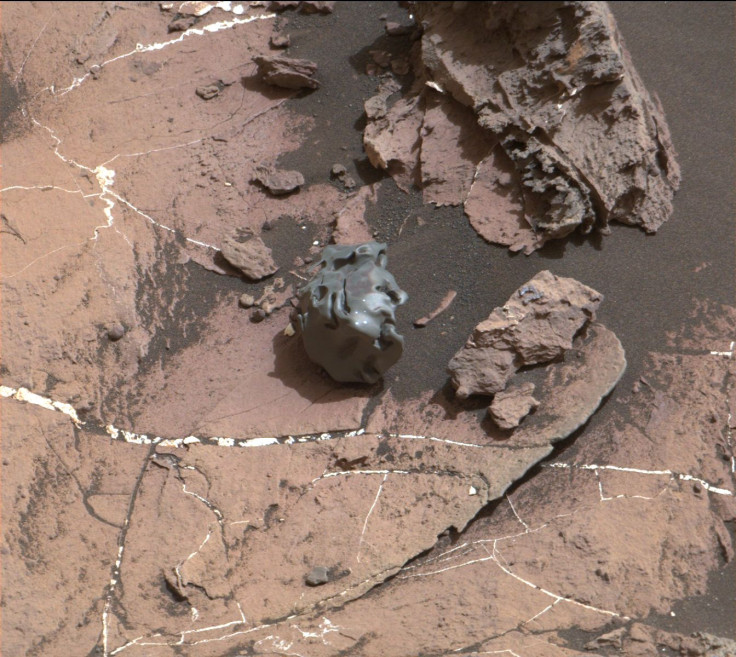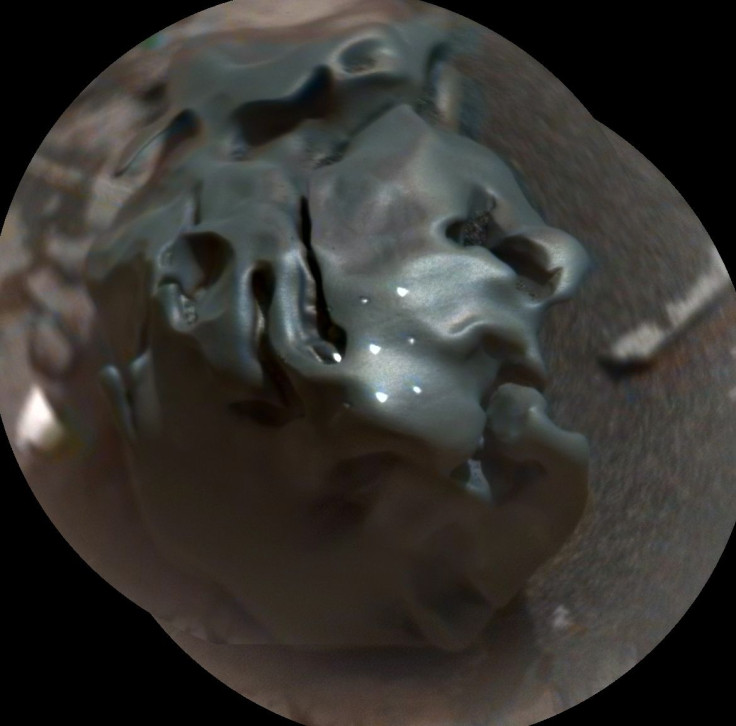Iron Meteorite On Mars: Curiosity Investigates Odd-Looking Space Rock

A mysterious object discovered in images taken by NASA’s Curiosity rover last week is an iron-nickel meteorite, the space agency confirmed Thursday. The meteorite, which belongs to a common class of space rocks found on Earth, is the first on Mars to be examined with a laser-firing spectrometer onboard the NASA rover.
Doing so revealed that the meteorite, which has been informally named “Egg Rock” because of its peculiar shape, consists mainly of iron, nickel and phosphorus, along with trace amounts of certain other elements whose concentrations are still being determined.

“Iron meteorites provide records of many different asteroids that broke up, with fragments of their cores ending up on Earth and on Mars,” Horton Newsom from the University of New Mexico, Albuquerque, and a team member of the Curiosity's Chemistry and Camera (ChemCam) team, said in a statement. “Mars may have sampled a different population of asteroids than Earth has.”
This is not the first iron meteorite to be found on Mars — a planet whose almost nonexistent atmosphere and close proximity to the asteroid belt ensures that its surface is peppered with hundreds of thousands of space rocks. In 2014, for instance, Curiosity discovered a 2 meter-wide iron meteorite scientists later named “Lebanon.”
Astronomers believe that Egg Rock acquired its smooth appearance as the core material of the infalling asteroid melted — a process that eventually created a solid core of metal.
“The dark, smooth and lustrous aspect of this target, and it’s sort of spherical shape attracted the attention of some MSL scientists when we received the Mastcam images at the new location,” Pierre-Yves Meslin, also a member of ChemCam, said in the statement.
Scientists believe that the study of iron meteorites found on Mars can provide information about how long exposure to the Martian environment has affected them, in comparison with how Earth’s moisture- and oxygen-rich environment affects iron meteorites. On the red planet, iron meteorites are more common than stony meteorites, probably because they are better at resisting erosion.
© Copyright IBTimes 2024. All rights reserved.






















